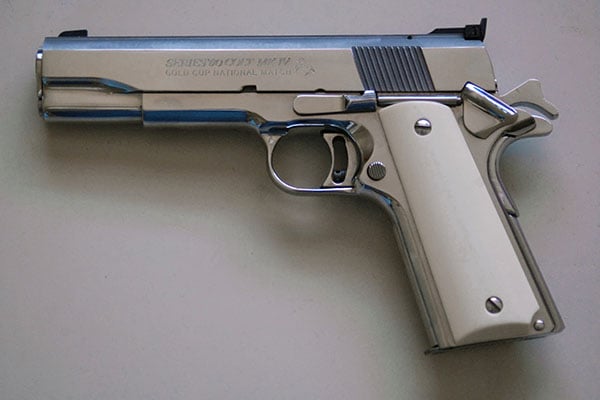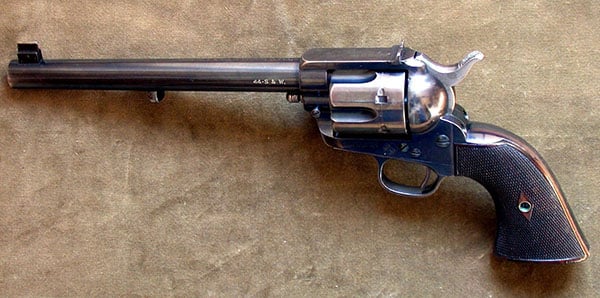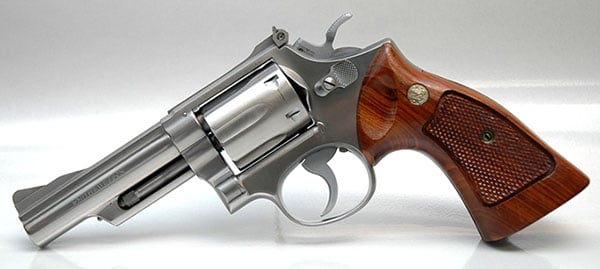
Last Updated on
From the classic single action revolver of the Wild West to the fully automatic “machine pistols” used in warfare today, there are many different types of pistol actions available. Learn some basics about pistol action styles before you buy your next handgun!
For those unfamiliar with pistols and handguns, or really how any type of common firearm works, understanding the many different types of actions can be challenging. The “action” on a pistol refers to the mechanical relationship between the trigger and the hammer.
The different types of actions are organized based on the functions that occur when the trigger is pulled. No matter what type of action you choose, the trigger’s most basic and obvious function is to release the hammer or striker. However, depending on the action, the trigger may cock the hammer/striker, deactivate any passive safeties, rotate a revolver’s cylinder and perform many other functions.
Single Action (SA)
Many of the best firearms in history utilized a single action (SA). Early revolvers such as the Colt Single Action Army gained widespread popularity for their functionality and reliability. With these revolvers and any other single action firearms, the trigger performs only one single function: it releases the hammer.
Unless another manual step is taken, a single action firearm will remain inert after firing. Pistols like the Colt Single Action Army included a mechanism that would rotate a new round under the hammer when the hammer is manually cocked.
Many handgun enthusiasts prefer single action pistols because they are simple by design. The mechanisms of these handguns are uncomplicated, reliable and easily serviced. Shooters also like the light and short trigger stroke of most single action handguns.
Some single action pistols are categorized under “SAO,” or single action only; however, there is no real different between SA and SAO pistols. Single actions are also very common in rifles and shotguns.
Double Action (DA)
One of the next key developments in handgun design was the creation of the double action revolver. The trigger mechanism on double action (DA) firearms performs two major functions: cocking and releasing the hammer.
Unlike the SA vs. SAO classifications which have no true difference, the DA and DAO (double action only) classifications come with an array of differences. DA handguns (sometimes referred to as SA/DA) can also be fired in SA mode by manually cocking the hammer, but DAO firearms do not allow for single action firing and have no accessible hammer spur.
The double-action trigger mechanism is significantly heaver and longer than a single action mechanism because it has to pull the hammer back and release it in the same step. DA or SA/DA handguns allow the shooter to take advantage of this shorter and lighter trigger stroke when needed.
So why would anyone want to deal with the heavier trigger stroke of a DAO pistol? DAO handguns can actually offer a range of advantages. One basic advantage involves the different distance the hammer falls in DA versus SA mode. Single actions require the hammer to be much further away from the primer than double action firearms. The shorter distance provided by double actions decrease the time and hammer motion that can disturb the sight picture. Therefore, DA handguns generally offer better accuracy.
Another major advantage of DAO pistols involves their improved safety. Since DAO pistols cannot be manually cocked, they eliminate a wide array of dangerous situations such as holding a gun cocked gun on someone. The safety advantage of DAO handguns make them popular in law enforcement and many other applications.
Semi-Auto
The semi-automatic mechanism found on some pistols is independent of the trigger mechanism and can be used with both single and double action. This mechanism is built to harness the remaining energy of each shot to reload a new cartridge into the chamber automatically.
For most semi-automatic pistols, the shooter must manually load the first round into the chamber by “racking the slide,” or pulling and releasing the slide mechanism. After the first round is fired, the recoil of the pistol ejects the spent shell casing and automatically reloads the chamber. This mechanism generally allows for larger cartridge storing and quicker reloading.
Single action semi-automatic pistols work by using the recoil operation to re-cock the hammer for each shot. The hammer is first cocked by manually “racking the slide.” Most handguns like this offer a manual safety. The world-famous Colt M1911 represents a great example of this action style.
Double action semi-automatic pistols are very similar except that, on the first shot, the trigger cocks and releases the hammer, not the recoil operation. On the second and remaining shots, the mechanism works just like a single action as the recoil re-cocks the hammer. This means that the first shot of the gun will much longer and heavier than the following shots.
Variants
There are also many other variations of pistol actions available today. Set triggers represent one of the most common variations of trigger actions. The set trigger is designed to reduce trigger pull without reducing safety in the field.
On semi-automatic pistols, the striker or hammer can be “pre-set” in a partially-cocked position upon firing or loading. Pistols with this function differ from basic DA handguns as they do not allow the trigger mechanism to fully cock the striker or hammer on its own. They also differ from basic SA pistols as the striker or hammer is generally incapable of lighting the primer on its own. Glock, Smith & Wesson, Ruger and many other popular handgun manufacturers offer this action variant.
Some specialized handgun manufacturers also offer variable triggers such as the double-crescent, progressive and staged trigger. The double-crescent trigger features and upper and lower trigger segment. The upper segment allows for semi-automatic firing, while the lower segment is fully automatic.
The progressive trigger allows variable firing rate based on the level of depression. A light trigger pull will produce a single shot, while a fully depressed trigger pull produces fully automatic fire. The staged trigger is similar to the progressive, but is based more on number of rounds fired. All of these variable trigger mechanisms can be dangerous and should not be used for basic home defense or competition.
Although modern pistols all begin with the same general design, technological advancements and the demand for high performance in many different applications have resulted in a wide array of options, upgrades and action styles. To find the right one for you, you should start with the most basic handgun and work through all of your options.







Leave a Reply